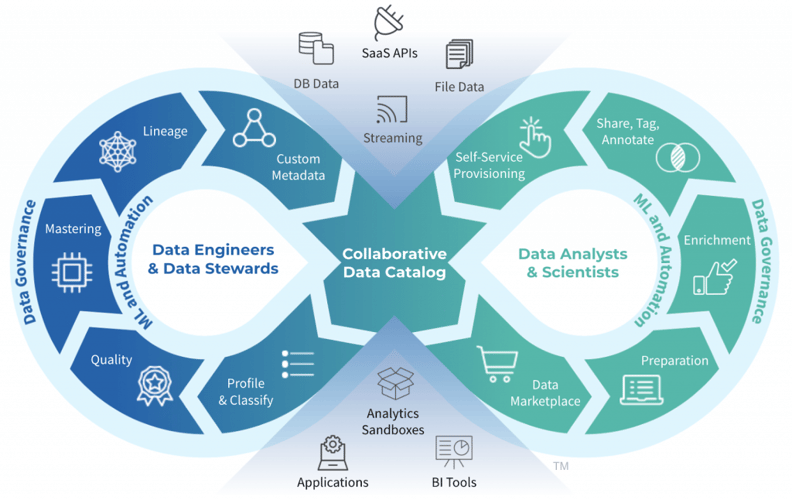
2023 Trends in Data Engineering
As every developer knows, data sent to data lakes regularly changes meaning over time—fields merge and separate, codes are added, and so on. Yet, data engineering trends increasingly demand operational historical data, leaving data teams with a heavy load of backtracking and downstream data drifting struggles. But what if data was automatically stored at its origin? And each change of state was kept in a stream?
EventStoreDB (ESDB) helps developers analyze and address the impact of data changes to historical data, not just the current state data that traditional databases expose. This added level of insight is fueling advanced technologies with a deeper understanding of why situations occur and how developers can prevent or encourage them.
Let’s take a closer look at the data engineering trends for 2023 and why database architecture must be a priority for success.
The explosion of data sources keeps growing in 2023
There has never been more data than there is today—sitting at 64 zettabytes in 2020 and forecasted to reach 180 zettabytes in 2025, the amount of data is rising rapidly. Yet, only 2% of this data is currently used, creating an increasingly large gap between raw, untouched data and the knowledge extracted.
Augmented analytics (or simply AA) are data analytics tools and processes that support artificial intelligence (AI), machine learning (ML), and natural language processing (NLP) techniques. Built to deliver real-time automated insights, these systems require large datasets of high quality to ensure reliability. That means no duplicates, syntax errors, or bias—a pretty tough task with increasingly large amounts of changeable, unstructured data.
EventStoreDB simplifies the process of integrating AA tools as it captures data from the source with its original state immutable to change. This way, no matter how much testing and experimentation has gone on behind the scenes, data scientists and their tools will always have the truth at their core.
Cut back time spent on tracing sources and losing data value, and power up your AA tools with quality data in 2023.
From DevOps to DataOps it’s time to collaborate
To say every company is a data company is no hyperbole. And if they’re not, they should be.
But software developers can only deliver applications quickly if the data is accurate and reliable. While it’s the quality assurance (QA) teams’ role to detect bugs and release fresh code into production, as data points increase, so does the complexity of this task.
DataOps brings best practices to modern data management to build and maintain streamlined, agile data analytics pipelines. Practices include creating automated workflows for data product creation, comprehensive metadata identification and categorization, and easy-to-use data catalogs.
.png?width=779&height=407&name=Copy%20of%20Copy%20of%20LinkedIn%20Ad%20Image%20(1).png)
DataOps connects business users with data engineers, data scientists, analysts, and IT to determine which metrics are valuable for creating business intelligence. Next, they confirm which data sets are relevant, which technologies can extract the data, and how to transform and analyze the retrieved data.
EventStoreDB will save DataOps teams time as data won’t be merged, lost, or bifurcated from multiple users. Instead, all data and state changes are automatically recorded chronologically in event streams, with the original source immutable. So DataOps teams of 2023 can uncover what creates unstructured data and build agile pipelines that are stored from their origin.
The right data architecture puts you in the lead
Industries across the board struggle with outdated data, delayed identification of threats and opportunities, and consequent ability to respond quickly. A Coleman Parkes survey found that financial services (57%), transportation and logistics (46%), and retail (44%) all raised concerns about making attune business decisions as a result.
Event-driven architecture (EDA) considers systems as ‘event producers’ or ‘event consumers,’ and the two are usually independent. Being decoupled or loosely coupled by nature, applications can make data-driven decisions without waiting for a response, preventing other parts of the system from slowing down. The ‘event producers’ simply broadcast data to any listening ‘event consumers’ in real-time, helping organizations act in a fast-paced environment.
Already, 85% of companies use EDA to integrate apps, share data, or connect devices for data analytics tools. Yet, just 13% of them applied EDA for most use cases throughout the organization. And there’s a reason this small percentile is considered the gold standard: If data—or events—are broadcasted, and no ‘event consumers’ are listening, the data is lost. This is where EventStoreDB comes in.
EventStoreDB is a state-transition database that stores all data changes of state in immutable event streams. Doing this saves all data context without bogging down the system with repeated states or overwriting previous states with current data—giving data specialists the added benefit of time travel. They can pause, rewind, and replay any action that took place within the data network.
Modern data stacks aren’t linear—data no longer has to be worked through a long series of steps. Rather, to operate non-linear networks, EventStoreDB attaches rich lineage information to events themselves. This way, it can use sequence numbers and active metadata to govern the data, ensuring only users and applications that require specific data receive it.
Today, a new category of database is emerging that captures data at its origin, eliminating unstructured data challenges and the timely storage-agnostic processes that come with it. EventStoreDB is your solution to optimize data engineering in 2023.
Fancy trying out EventStoreDB yourself? Download our free, open-source version!